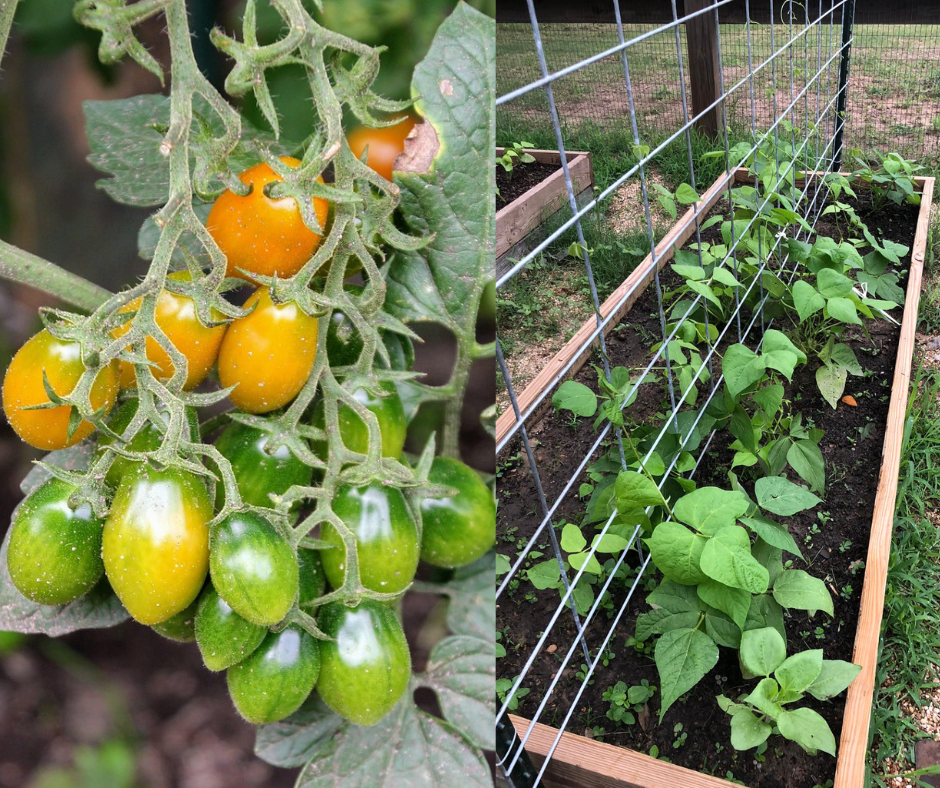
This post may have affiliate links. This means that sometimes when you click a link on our site and make a purchase on Amazon, we may earn a small commission at no additional cost to you. We only recommend products we truly believe in, and your support helps keep us running!
Imagine a garden where lush tomato plants and vibrant bean vines dance in perfect harmony, their roots intertwined in a symbiotic dance that yields bountiful harvests. This is the enchanting wonder of companion planting, a time-honored practice that brings together plants with complementary needs and benefits. In this article, we’ll reveal 6 secret hacks that will transform your tomato and bean garden into a flourishing oasis, all while embracing the magic of companion planting.
Why Do Tomatoes And Beans Make Such A Great Pair In The Garden?
Forget the stereotypes of separate veggie beds! Beans and tomatoes share a surprising kinship, making them ideal companions. Here’s why:
- Nitrogen Powerhouse: Beans, being legumes, fix nitrogen in the soil, a vital nutrient for healthy tomato growth and abundant fruit production. Think of them as natural fertilizer factories working 24/7 for your tomatoes!
- Pest Patrol Partnership: Beans, particularly bush beans, act as living decoys, attracting aphids and other pests away from your precious tomatoes. This selfless sacrifice gives your tomatoes a fighting chance against those pesky invaders.
- Moisture Masters: Beans, with their shallower root systems, don’t compete for water with deeper-rooted tomatoes. Instead, they create a living mulch, helping retain moisture in the soil, especially beneficial during hot, dry spells.
- Space Optimization Champions: Interplanting beans and tomatoes makes efficient use of space. Beans climb up tomato cages, maximizing vertical space, while their shade helps keep the soil cooler for both plants.
- Pollination Party Boost: Beans attract pollinators like bees and butterflies, essential for both their own flower set and for improving tomato pollination, leading to more bountiful harvests.
Hack 1: Choose the Right Partners
Opt for bush beans like Blue Lake or Roma II, as they have a compact growth habit and won’t compete with your tomatoes for sunlight. For tomatoes, select varieties like Celebrity or Early Girl, are known for their resilience and compatibility with beans.
Hack 2: Timing is Key
Plant your beans two weeks after your tomatoes have established themselves. This ensures the beans don’t outcompete the young tomatoes for resources. Remember, succession planting (planting beans in batches throughout the season) extends your harvest window!
Hack 3: The Three Sisters Method
The Three Sisters Method is a Native American gardening technique that combines corn, beans, and squash. By applying this method to tomatoes and beans, you’ll create a lush, interconnected garden that supports each plant’s growth and health.
- Plant tomatoes at the base of the bean plants.
- As the bean vines grow, weave them around the tomato plants to provide support and shade.
- The tomato plants will benefit from the nitrogen-rich soil created by the beans, while the beans will enjoy the shade and support provided by the tomatoes.
Hack 4: The Tomato-Bean Tunnel
A tomato-bean tunnel is a simple yet effective way to maximize space in your garden. By planting tomatoes and beans in a raised bed or along a fence, you’ll create a vertical garden that allows for better air circulation and easier maintenance.
- Choose a sunny location and prepare the soil by adding compost and organic matter.
- Plant tomatoes and beans in rows, leaving enough space between plants to allow for growth and air circulation.
- As the bean vines grow, weave them through the tomato plants to create a lush, interconnected tunnel.
Hack 5: The Tomato-Bean Mulch
Mulching is an essential practice that helps to conserve moisture, suppress weeds, and improve soil health. In a tomato-bean garden, mulching can help to create a more favorable environment for both plants.
- Choose a natural mulch, such as straw, grass clippings, or shredded leaves.
- Spread the mulch around the base of the tomato and bean plants, being careful not to cover the plant stems.
- The mulch will help to retain moisture, suppress weeds, and improve soil health, while also providing a habitat for beneficial insects.
Hack 6: The Tomato-Bean Pest Repellent
By planting certain companion plants alongside tomatoes and beans, you can create a natural pest repellent that will help to protect your garden from common pests.
- Plant marigolds, basil, or garlic around the perimeter of your tomato-bean garden to deter pests such as aphids, tomato hornworms, and whiteflies.
- Plant nasturtiums or alyssum near the base of your tomato plants to attract beneficial insects, such as ladybugs and lacewings, that will help to control pests.
- The combination of these companion plants will create a natural pest repellent that will help to protect your tomato-bean garden from common pests.
